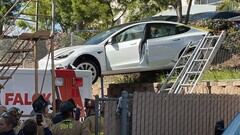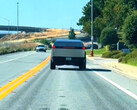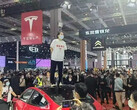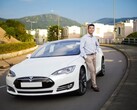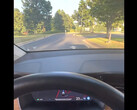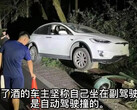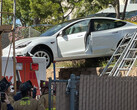Faulty invertor calibration sequence may have mimicked a depressed pedal in the numerous cases of sudden unintended acceleration (SUA) that Tesla vehicles have been involved in. The NHTSA investigation considered these accidents a driver error as the logs provided by Tesla demonstrated a floored acceleration pedal.
An engineer who previously petitioned the Office of Defects Investigation (ODI) to reopen it to no avail, has now found what may have fooled the regulator into closing it. According to their new petition for reopening Tesla's SUA investigation, schematics of the invertor that Tesla uses have only recently become available.
They show that the sudden unintended acceleration of Tesla cars may have been caused by negative voltage spikes that are logged as a fully depressed pedal, fooling both Tesla and the NHTSA investigators that there has been no hardware or software defect.
...the larger APP sensor outputs are indistinguishable from the values produced when the driver presses the accelerator pedal, they are treated as normal by the subsequent pedal monitor checks and are sent on to the pedal map to generate a motor torque and to be recorded by the vehicle log and by the EDR. The result is sudden unintended Tesla Model 3 Susceptibility to Unintended Acceleration, with the driver being accused of stepping on the accelerator pedal to cause the acceleration because the log data and the EDR data show that the APP sensor signals have been increased. This mechanism for unintended acceleration can exist in all models of Tesla vehicles. It does not require any changes in the accelerator pedal sensors or their analog outputs. Instead, it is caused by a change in the ADC calibration used when the sensor outputs are digitized, which can make the digitized accelerator pedal sensor outputs increase to a maximum of 100% even though the analog accelerator pedal outputs remain unch anged because the accelerator pedal is not being pressed by the driver. This mechanism explains how sudden unintended acceleration can occur in all Tesla vehicles with the accelerator pedal sensor data in both the EDR and the vehicle log showing up to 100% pedal even though the driver never stepped on the accelerator pedal.
In simpler terms, the low-voltage 12V electrical system of Tesla vehicles that is strained as it is to power all the electronic paraphernalia in them, can be further stressed enough by pulls like the increased steering assist effort while maneuvering the heavy EV at place. This would cause negative voltage spikes and, if the invertor happens to recalibrate at the time, the sensors would send wrong signals and the Tesla will then accelerate suddenly, logging the event as a fully depressed pedal. The petition then continues:
Whoever believes these EDR APP sensor signals were made by drivers pressing on the accelerator pedal instead of the brake pedal must also explain the similarity between the two signals even though they were produced by two different drivers in vastly different situations. This similarity lies not only in the large amplitudes of the two signals, but also in the similarity of the two rise times; namely, a slow one lasting for about 0.8 seconds followed by a faster one that rises to a maximum in less than a half a second. Are we to believe that two drivers of different sexes and in two entirely different driving situations could press the accelerator pedal inadvertently at · almost exactly the same rates of movement with a slow depression first followed by a faster· occurring at almost the same time later?
Thankfully, instead of providing a second independent power source for delivering clean signals without interference, Tesla could simply alter the calibration software to test the voltage before sending it to the sensors with an update, claims the research.




